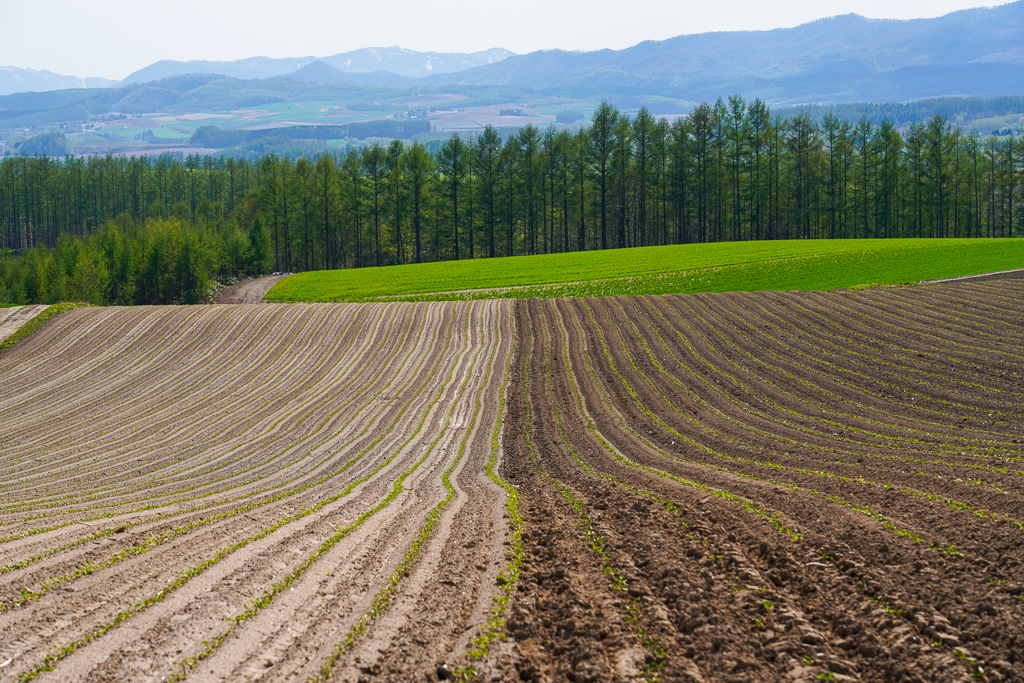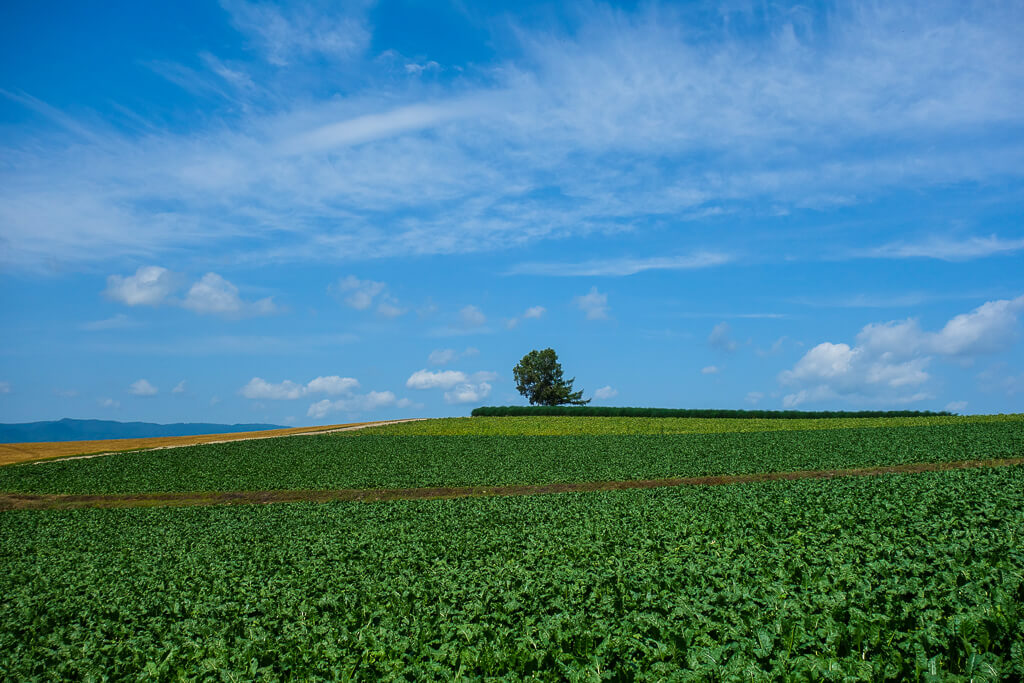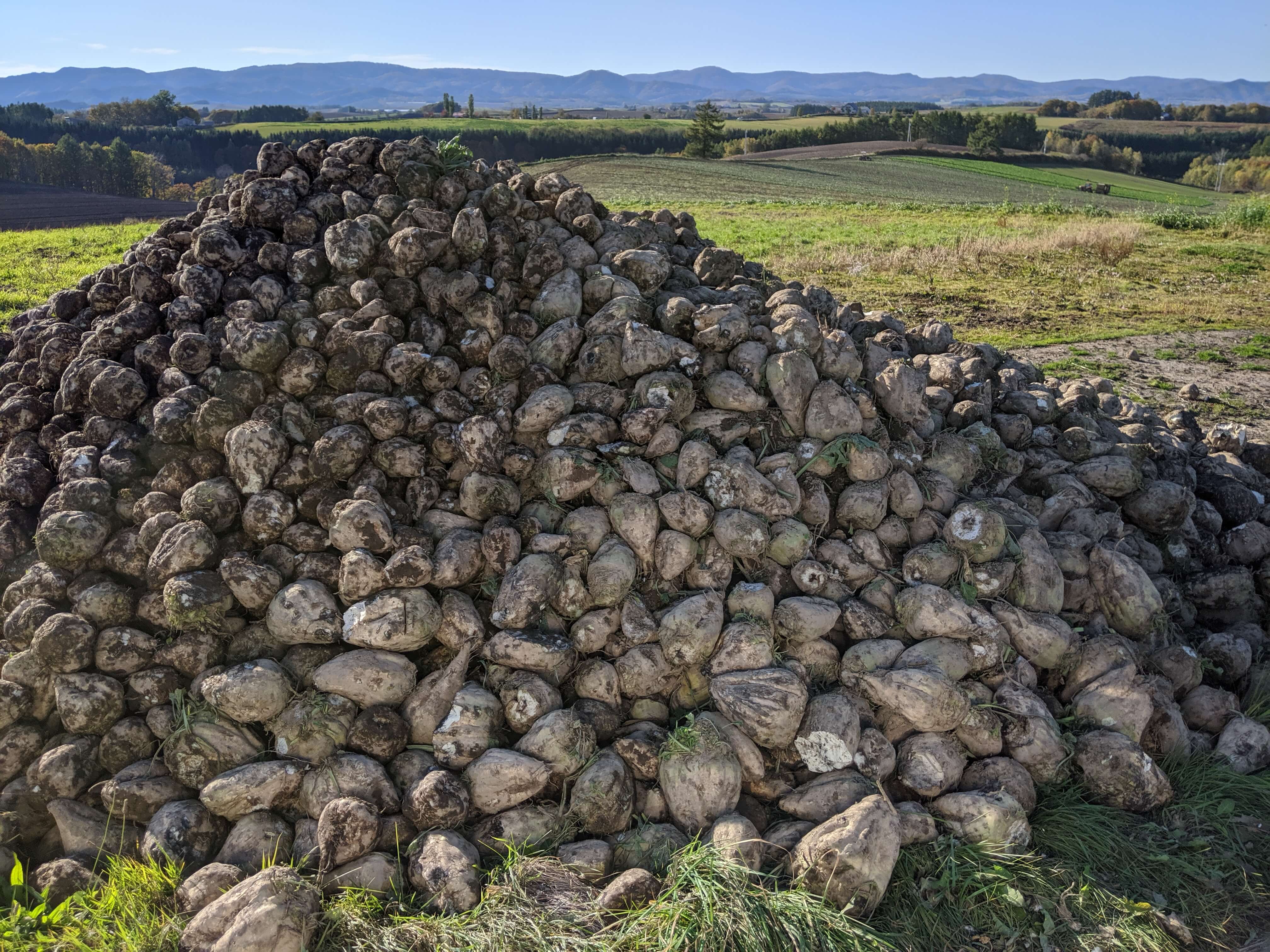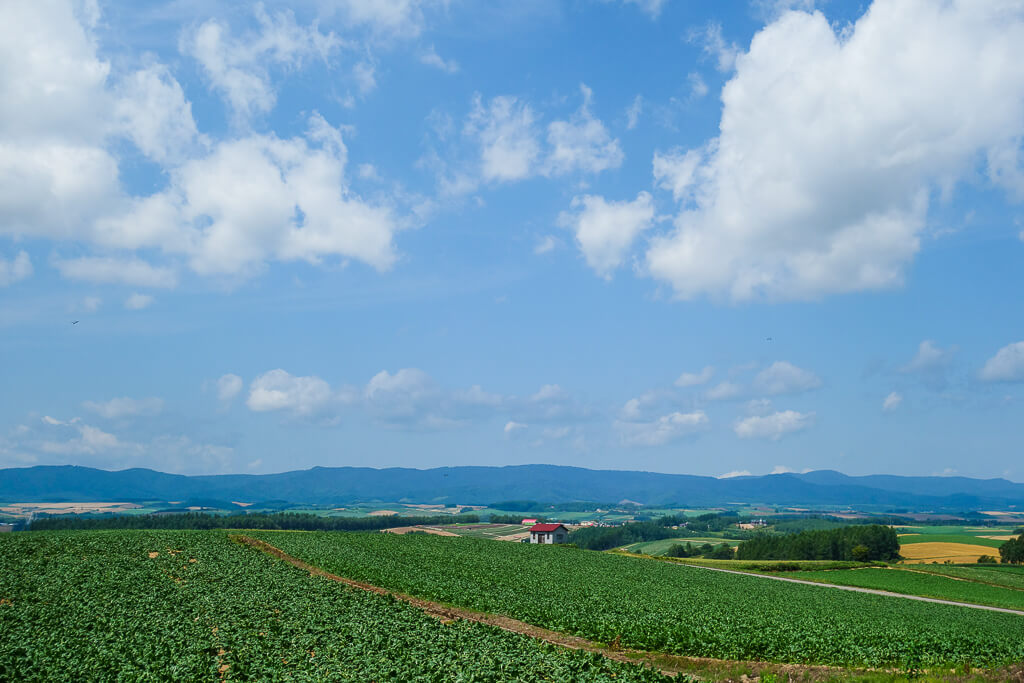가을
A Mountain of Rocks? Or Sugar Beet?
There’s a mountain of rocks in that field!
If you look out at the fields around mid-October, a strange sight will meet your eyes. For some reason, there’s bulky objects heaped up in the corner of the field.
At first glance, you might wonder if they are rocks or something similar gathered from the fields but the sheer volume of them might make you feel that that’s probably not the case.
In actual fact, these are harvested sugar beets!
Like sugar cane, sugar beet is the raw material needed to create granulated sugar. However, surprisingly, Hokkaido is the only place in Japan where sugar beet is cultivated.
Of the the surface area of planted farmland in Biei in 2018, wheat made up the most at 3,167 hectares with livestock fodder coming in next at 2,430 hectares. Sugar beet is next at 1,081 hectares, which is even bigger than the area taken up by potatoes at 808.9 hectares!
Furthermore, farming in Biei uses the crop rotation method whereby the produce growing in the plantations changes every year. Sugar beet is included among Biei’s crop rotation framework. Other crops used as a constant are wheat, potatoes and beans and the colors of the crops changing every year is what produces the pattern of Biei’s characteristic patchwork hills.
By the way, have you ever seen how sugar beet is cultivated?
In mid-February sugar beet cultivation begins, despite there still being a lot of snow on Hokkaido’s fields. They are planted in paper pots in warm poly tunnels and grow up into peppy little sprouts. As soon as the snow melts, the seedlings grown in the poly tunnels are transplanted into the fields. Due to a shortage of labour and less working hours recently, cases where farmers plant the beet seeds directly into the fields instead of the seedlings are on the rise in order to economise on time.
 These sugar beets are coming on nicely as they bask in the mid-summer sunshine
These sugar beets are coming on nicely as they bask in the mid-summer sunshine
Many people mistake a sugar beet field for a spinach field when they first see one but they’re actually not too far off because sugar beet is a plant closely related to spinach!
 The bright green leaves of sugar beet carpet the surface of this field (taken in August)
The bright green leaves of sugar beet carpet the surface of this field (taken in August)
When autumn arrives, there is a significant temperature difference between morning and the daytime. Those temperature differences are exactly the perfect conditions to draw out the sweet components in the beets and the beets become packed full of sugar content.

And so we come to the harvest season. The leaves in the fields are cut away and only the root is sent off to factories. The roots are finely chopped and are left in warm water to draw out their sugar content before being filtered, boiled down and separated into crystals and molasses. After being dried out, the crystals become either refined or granulated sugar while the molasses become brown sugar.
Natural sugar crystals are actually colourless and transparent but the crystals diffuse light reflection, causing them to look white. Ice and snow both look white for the same reason. Some of you may be wondering if that therefore means that the colour of brown sugar is not natural or if it has been burned but brown sugar is different to the pure crystals of refined or granulated sugar in that the natural brown syrup of the molasses are simply dried out as is. So the colour is perfectly natural!
In this way, sugar beet becomes sugar and the leaves and pulp from the beets is put to good use as food for Hokkaido’s livestock.
Incidentally, the weight of one sugar beet is approximately 800g to 1kg and just one beet is equal to one cup of sugar (170g, more or less)!
 What you see piled up here is a mountain of sugar, haha!
What you see piled up here is a mountain of sugar, haha!
But why are they piled up and just left in the fields like this?
There is a method to this madness!
If you’re curious as to what that method is, it’s because the beets are waiting for a sugar beet truck to arrive. The sugar beets harvested in Biei are transported to sugar processing factories elsewhere and transporting them batch by batch would make it impossible to keep up with the production line. There are also not enough sugar beet trucks for this. As such, a running order for coming to each individual farmer’s field to take the sugar beets is established in advance. If you look very closely, you’ll notice that in the entrance to each field a signboard has been erected with the farmer’s name and a number written on it so that the beet truck can find them. Those who are later in the running order cover their crop with a sheet and weight it down with a tire. This is to help smooth out the process if their crop is due to be taken after the snows start to fall.
My goodness! The farmers and the sugar beet truck drivers are all working so very hard!
 The hills of Biei and bright green sugar beet
The hills of Biei and bright green sugar beet
The beautiful scenery of Biei is all thanks to the life’s work of farmers and we have a tour where you are able to get close to this agricultural produce for yourself!
Join a knowledgeable guide for an introduction to Biei’s farming, produce, nature and history and, with special permission that Be My BIEI has received from farmers, stroll through a field. For more information about this tour, check the “Suggestion” box below!


